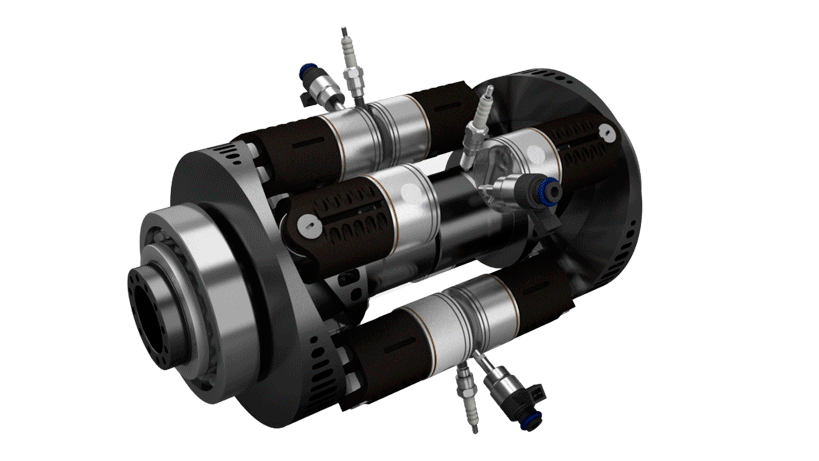5331 private links
INNengine of Granada, Spain had produced a opposed-piston engine that packed a pretty powerful punch in an extremely tiny package.
There's no cylinder head in this motor. Also no crankshaft, no camshaft, and no valves. That's why it's no surprise that this engine tips the scales at just 85 pounds. Somehow, it still produces 120 horsepower with just half a liter of displacement, thanks to what the company calls a single-stroke combustion cycle. //
Despite having four cylinder banks, the INNengine (depending on its configuration) actually has eight pistons. This is because the engine is an opposed-piston motor, meaning that each piston's compression stroke is performed against a second piston placed in the same cylinder bank rather than a static cylinder head. It still only has four combustion chambers, though, which means it sounds similar to a four-cylinder engine.
There are no connecting rods to be seen in this motor (at least not in a traditional sense). Instead, the pistons sit on rollers that ride against a lobed circular plate which can be adjusted to affect the engine's timing and compression ratio. As the lobe reaches its peak, the piston rushes towards top-dead-center where fuel is directly injected into the cylinder and a spark plug ignites the compressed air-fuel mixture.
The mechanical configuration also allows for better engine balance. That means typical drawbacks of an internal combustion motor (often referred to as noise, vibration, and harshness) are minimalized.
Once combustion happens, the piston is pushed back against the plate and forces the plate to rotate. This motion is synced between each half of the motor via a shared shaft—meaning, no extra timing components. Both pistons in the same cylinder bank mimic one another's movements almost exactly.
When the pistons reach the bottom of their strokes, a respective intake and exhaust port is uncovered. One piston is timed to reach bottom-dead-center slightly prior to the other, this allows the exhaust gasses to escape out of the exhaust port and create a vacuum inside of the cylinder—this technique is called scavenging. Fresh air is then pulled in via the intake port as the combustion byproduct is expelled. This effectively gives the pistons double duty, performing the work normally handled by valves in a typical combustion engine—which means that the common drawback of direct injection, carbon-laced valves, is a thing of the past. //
Now, here's the thing: this motor isn't a one-stroke engine. It has a compression stroke and exhaust stroke, making it a two-stroke cycle. INNengine acknowledges this and has said that it brands the motor as such because people would assume that a two-stroke engine would need to have oil mixed in along with fuel. Most two-strokes do. The company says that the one-stroke name was suggested by an "external ICE institution" and they found it to be "catchy," so INNengine stuck with it. //
the company seems to be instead targeting the EV market as a range extender, especially since that's the way the industry is ultimately headed.



